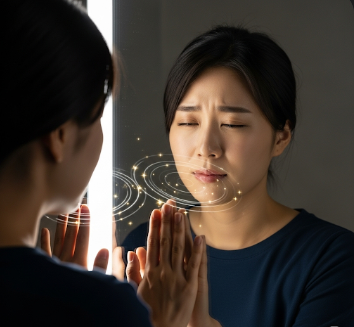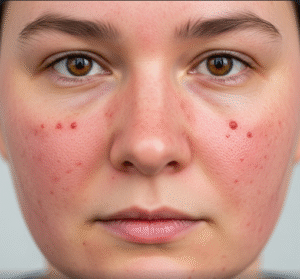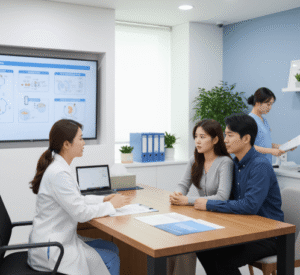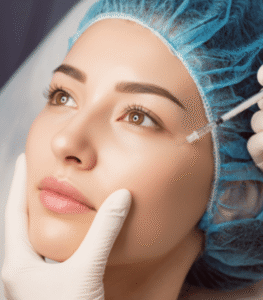Overview
Mirror-touch synesthesia (MTS) is a rare neurological condition in which a person feels sensations on their own body when they see someone else being touched. For example, if someone else is tapped on the shoulder, a person with MTS may actually feel a touch on their own shoulder. This condition is linked to enhanced mirror neuron activity, which is involved in empathy and social perception.
In Korea, neurologists and cognitive neuroscience centers study MTS using functional MRI (fMRI), EEG, and neuropsychological testing, offering insights into brain function, empathy, and sensory perception. Although MTS is not harmful, it can affect daily life and emotional well-being if severe.
Key Facts
➤ Mirror-touch synesthesia causes physical sensations in response to seeing others being touched.
➤ It is more common in women than men.
➤ Associated with heightened empathy and emotional sensitivity.
➤ Can affect daily life, particularly in crowded or physically interactive environments.
➤ In Korea, advanced neuroscience clinics provide research-based assessment and guidance.
What is Mirror-Touch Synesthesia?
Mirror-touch synesthesia is a neurological phenomenon where the brain’s mirror neuron system is unusually active, causing a person to literally feel what they see others feeling. Unlike normal empathetic responses, MTS involves actual tactile perception, creating a direct sensory experience rather than just an emotional one.
Symptoms of Mirror-Touch Synesthesia
People with MTS may experience:
➔ Feeling touched on the same body part when seeing someone else touched.
➔ Intense reactions to observed pain, such as flinching or cringing.
➔ Heightened emotional empathy, sometimes overwhelming.
➔ Difficulty in crowded or social situations due to constant tactile mirroring.
➔ Occasionally, sensory confusion when distinguishing between self and others’ touch.
Causes / Possible Causes
The exact cause of MTS is not fully understood, but research points to neurological and genetic factors:
Neurological Factors
➤ Hyperactivity in mirror neuron networks in the brain.
➤ Abnormal connectivity between somatosensory and visual cortices.
➤ Overlapping activation in regions responsible for tactile perception and empathy.
Genetic & Developmental Factors
➤ May have a hereditary component.
➤ Early brain development differences affecting sensory integration.
Associated Conditions
➤ Higher sensitivity in autism spectrum conditions.
➤ Occasionally linked to synesthetic experiences in other modalities (e.g., seeing sounds).
Risk Factors
➤ Female sex (studies suggest higher prevalence in women).
➤ Strong natural empathy and emotional sensitivity.
➤ Family history of synesthesia or sensory disorders.
➤ Early exposure to social learning environments that emphasize empathic responses.
Complications
While MTS is not physically harmful, it can cause:
➔ Emotional overwhelm in social situations.
➔ Difficulty distinguishing self vs. observed sensations.
➔ Increased anxiety or stress due to constant sensory input.
➔ Challenges in professions requiring frequent physical observation of others, such as healthcare or teaching.
When Should I See a Doctor?
Consult a neurologist or neuropsychologist if:
➤ The sensations interfere with daily functioning or social interactions.
➤ There is confusion between self and observed touch.
➤ Anxiety or emotional distress is triggered by seeing others touched.
➤ You wish to explore coping strategies or cognitive therapies.
Care and Treatment
Currently, there is no cure for mirror-touch synesthesia, but several strategies can help manage symptoms:
Lifestyle & Coping Strategies
➤ Awareness of triggers in social or crowded settings.
➤ Mindfulness and grounding exercises to differentiate self from observed touch.
➤ Gradual exposure to social situations to reduce anxiety.
➤ Journaling experiences to track patterns and intensity of sensations.
Psychological Support
➤ Cognitive-behavioral therapy (CBT) to manage anxiety or sensory overload.
➤ Support groups for individuals with synesthesia or sensory sensitivities.
➤ Relaxation techniques and stress management strategies.
Research-Based Interventions
➤ Neurofeedback and brain training may help modulate mirror neuron activity.
➤ Experimental therapies in neuroscience centers focus on sensory integration and perception modulation.
Treatment Options in Korea
Korea offers access to cutting-edge neuroscience clinics and research centers that evaluate and support patients with mirror-touch synesthesia.
Diagnostic Services
➤ Functional MRI (fMRI) to assess mirror neuron activity.
➤ EEG and neuropsychological tests for sensory processing.
➤ Cognitive assessments for empathy and social perception.
Supportive Care
➤ Counseling and cognitive therapy for managing emotional impact.
➤ Training programs for sensory integration and coping.
➤ Educational resources for families and caregivers.
Research Opportunities
➤ Participation in studies exploring the neural mechanisms of synesthesia.
➤ Access to experimental therapies under medical supervision.













